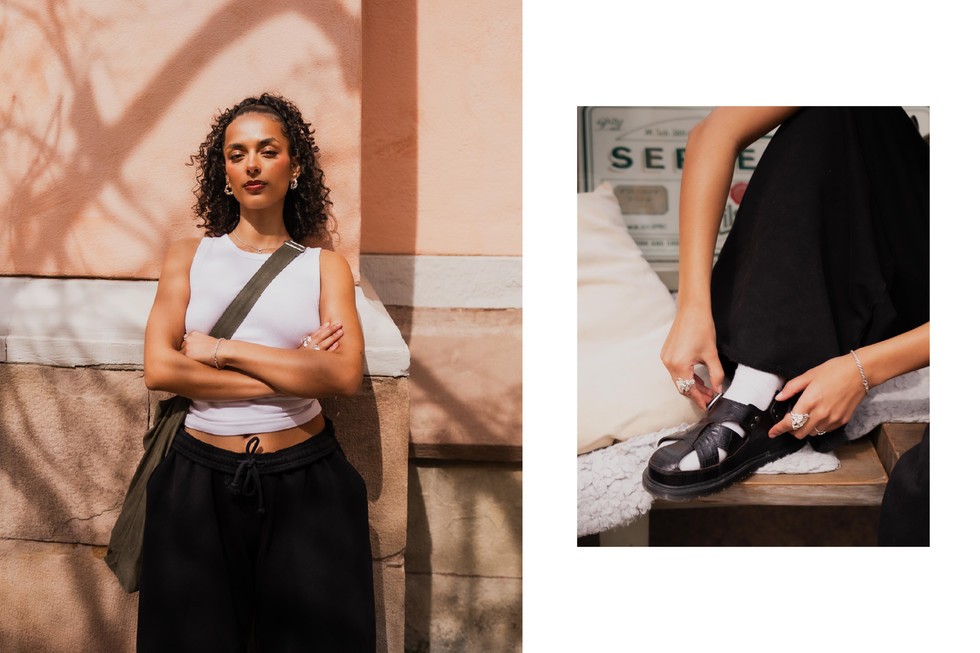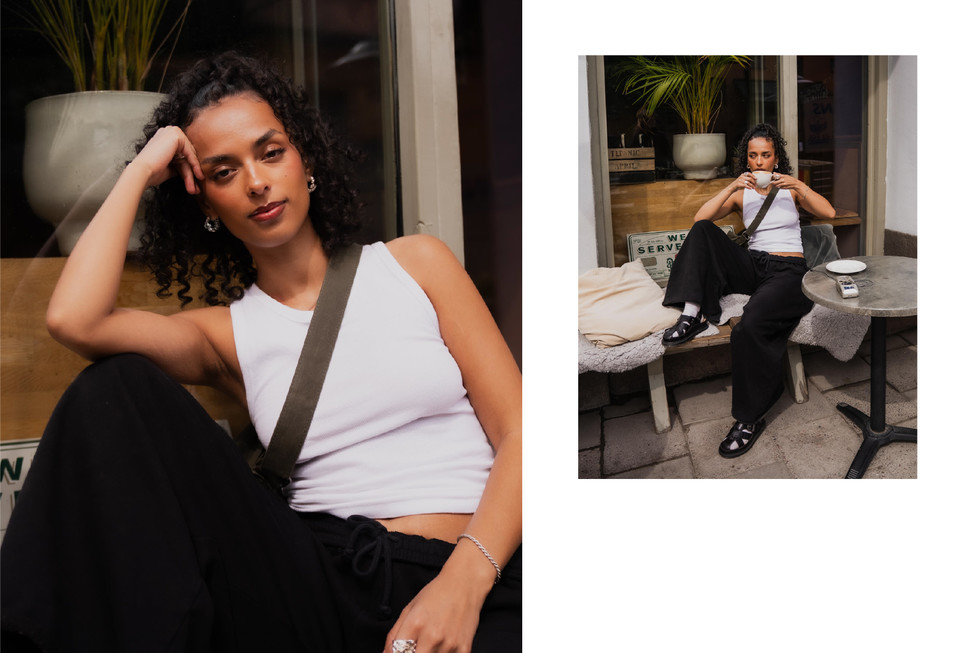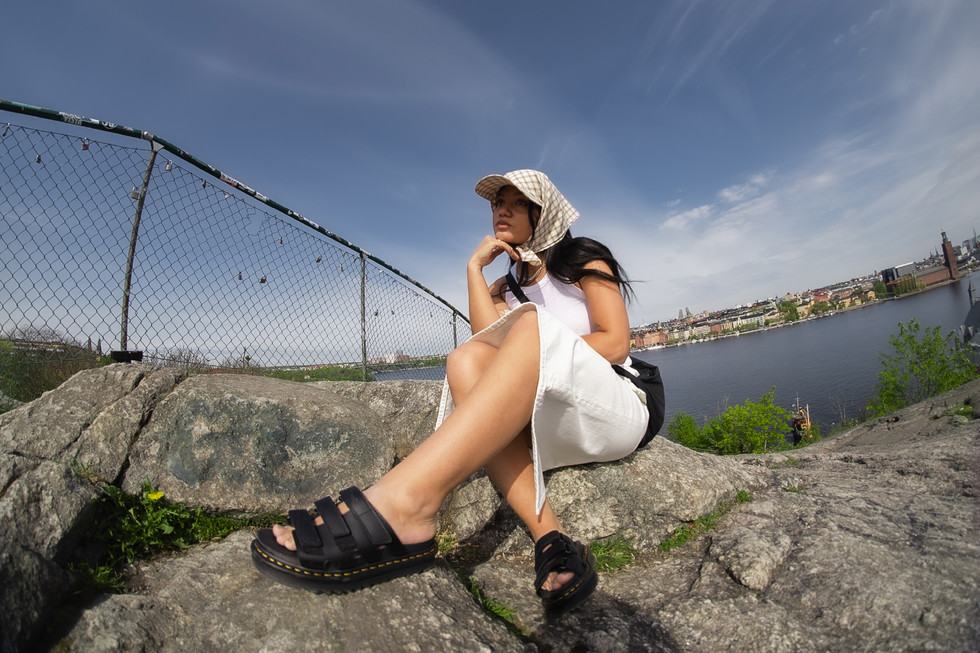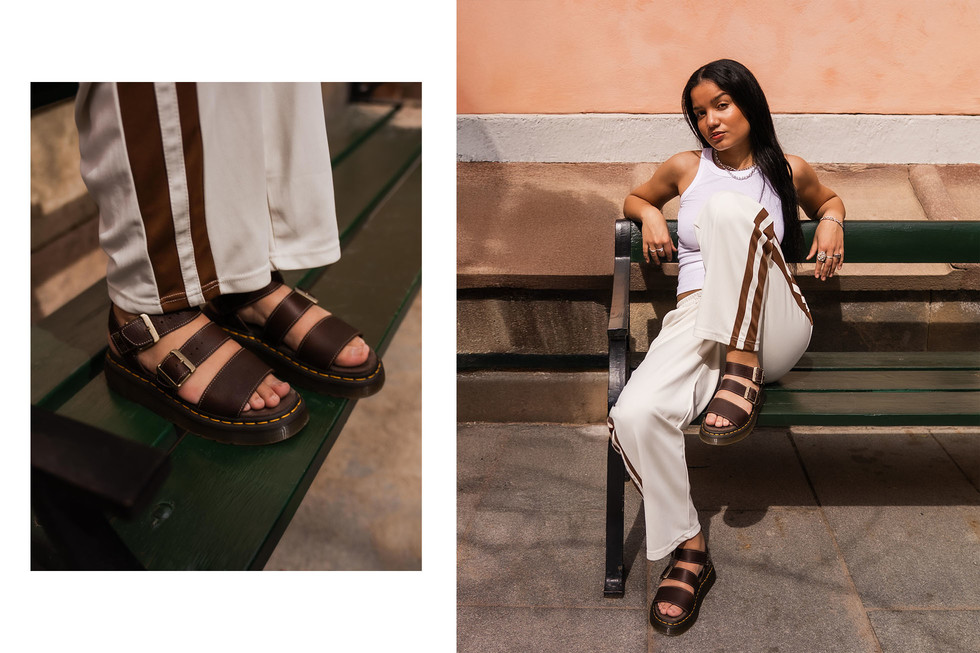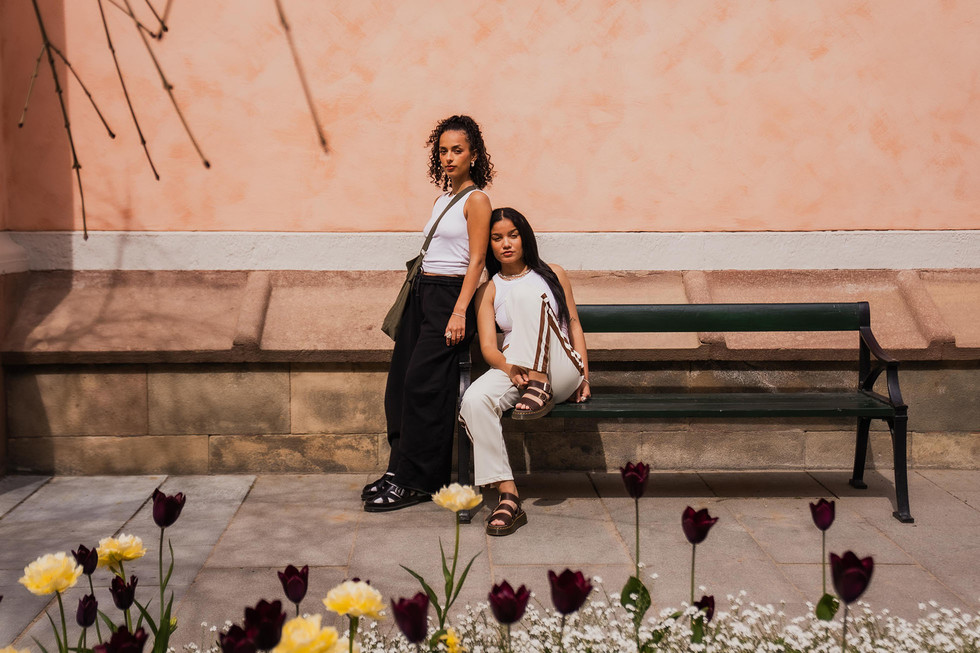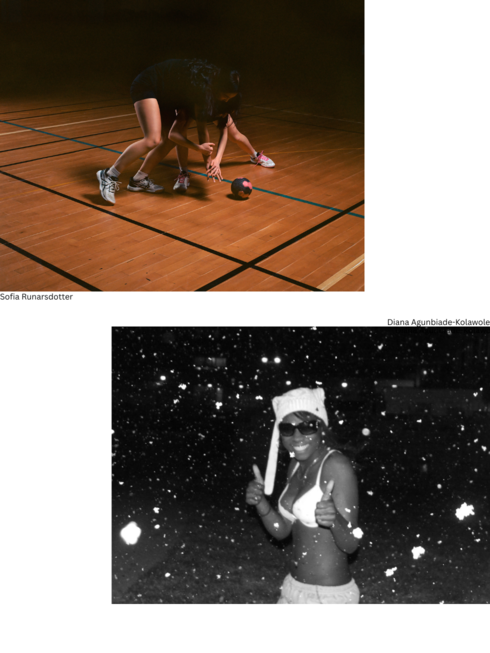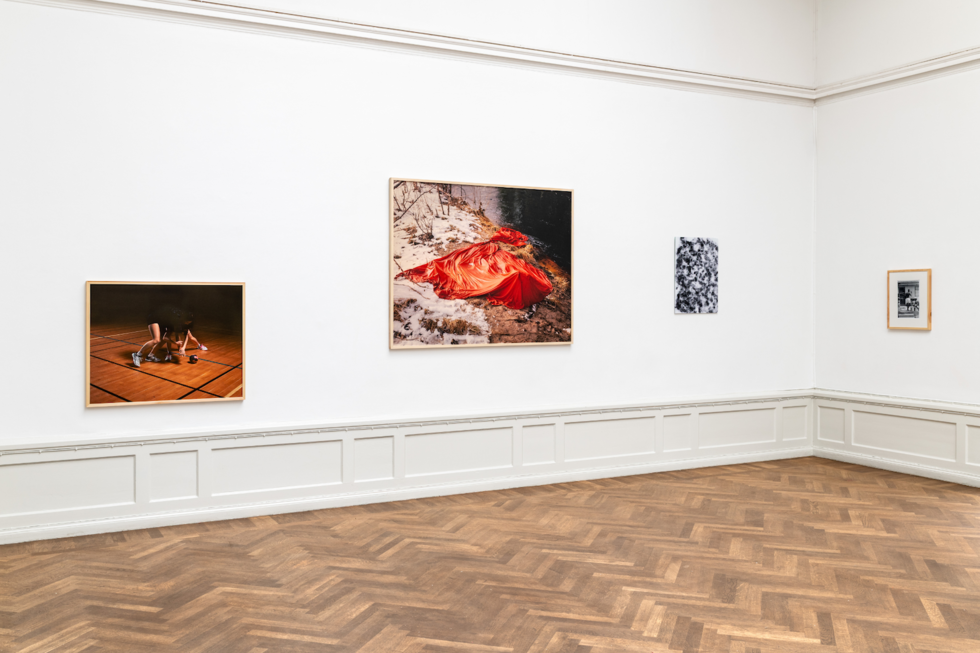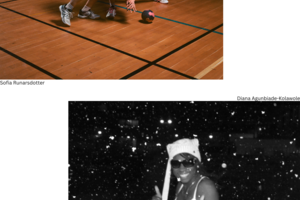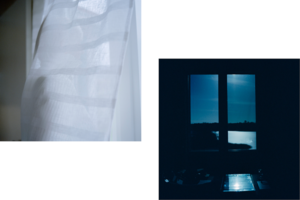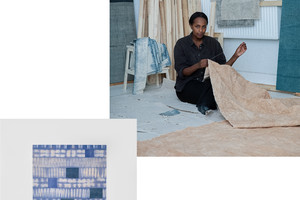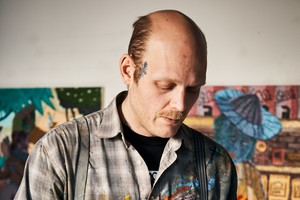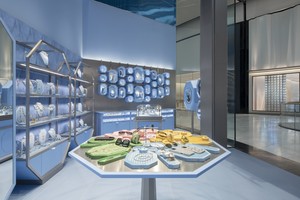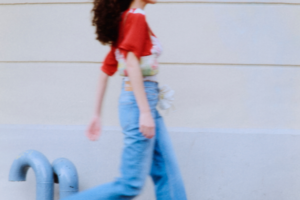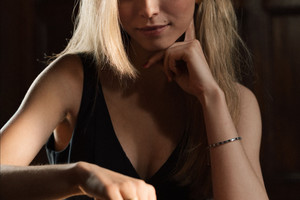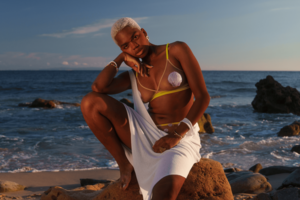Step Into Summer: A City Story in Sandals
Written by Sandra Myhrberg by Zohra VanlerbergheDr. Martens steps into SS25 with a sandals collection built for movement, through city streets, summer memories, and everyday moments. Drawing from over three decades of archive design, the new range revives key elements like contrast stitching and platform soles rooted in unmistakable DM’s DNA.
To explore how these sandals live in real life, we linked up with Stockholm-based artists Naliyah and Zikai, two creatives who know their city’s rhythm by heart. Naliyah takes us to Nytorget and Gamla Stan, two places full of personal meaning, from stillness found near her studio to memories of ferry rides to her family’s summer place. For Zikai, it’s all about the laid-back pull of Reimersholme, Långholmen, and Skinnarviksberget, places layered with nostalgia, community, and the kind of summer energy that lingers.
Together, they show us how the right sandals don’t just carry you, they carry the story of where you’ve been, and where you’re going.
Sandra Myhrberg: What does a perfect summer day in Stockholm look like for you, and how do your favourite spots reflect that vibe?
Naliyah: A perfect summer day in Stockholm? Just good people, good food, and not having to rush anywhere. I love sharing a meal with family or friends somewhere nice, outside if the weather lets us. I don’t need much more than that.
Zikai: Waking up at 11 am with no plans, grabbing an overpriced coffee, and meeting some friends by Reimersholme or Långholmen. Then we just stay there for an unreasonably long time. Then repeat.
SM: You’ve both chosen locations that are full of character. What makes these places meaningful or inspiring to you personally?
N: London taught me how to stretch time and find stillness in movement. Nytorget reminds me of that. It holds the same frequency. It’s not just where the studio is, it’s where my thoughts settle. Gamla Stan takes me back to childhood. I used to catch the local boat from there to my family’s summer place. Some things just stay with you.
Z: I chose those locations because they bring back memories from summers during my teenage years. I had friends living in the area, and we were always up to whatever. Even though time passes, I still come back here every summer. Whether I like it or not, I kind of have to my friends aren’t going anywhere.
SM: How would you describe your style during the warmer months, and how do Dr. Martens sandals fit into that?
N: Tight top, parachute pants, clean accessories. An oversized hoodie for late summer nights. Simple, but it says enough. The Dr. Martens sandals give the finishing touch.
Z: I do love a little toe moment- especially during July and August when I set up camp anywhere there’s water. Day to day, I like to keep it simple with a tank top, shorts and a few accessories. What I like about Dr. Martens sandals is how they make a chill budget outfit hit different.
SM: When exploring the city on foot, what makes a sandal stand out—comfort, style, versatility? How do you balance it all?
N: Balance isn’t something I chase; I try to just tune into it. For me, footwear sets the tone. A sandal has to be comfortable first, but if it lifts the whole outfit, even better.
Z: Stockholm is such a walkable city, so comfort has to come first. That said, I’m not always the best at walking as much as I should, so I do consider style. But it depends on the occasion and what I'm styling the sandal for. If I'm chilling, I just want to be comfortable.
SM: What’s your favourite occasion to wear sandals?
N: After a good swim in the Swedish archipelago.
Z: On my way to, in, and from the studio.
SM: What’s one hidden gem or local tradition in your neighbourhood that more people should know about?
N: Shoutout to Omayma at Nytorget! It’s more than a café, it’s the kind of place where the music always hits, the energy feels familiar, and no one’s in a rush to leave. The owners have created a space that holds both young voices and old souls, a local rhythm and a safe space.
Z: There's a lake called Söderbysjön in the Söderort area where I grew up. That place was banging when I was younger and still is. It has beautiful rocky cliffs and an overall immaculate vibe.
SM: Stockholm has such distinct areas. How do the places you've picked showcase the city’s diversity or personality?
Z: Skinnarviksberget is probably very nostalgic for a lot of Stockholmers since it’s one of the best viewpoints in the city. And with Långholmen, I think it’s kind of wild that you can swim in clean (depending on who you ask) water right in the middle of the city. That’s not something you get in most places.
SM: In what ways does your creative work or lifestyle influence how you experience and move through the city?
N: I think I move through the city the same way I make music—with curiosity and quiet intensity. I’m always watching, feeling, listening. Certain corners or passing conversations plant melodies in me without trying.
Z: I spend most of my time in the studio, mostly in the middle of the city where I live. But my family’s in Söderort, and my area can be kind of boring sometimes, so I end up going there a lot.
SM: If you could give one piece of advice to someone visiting Stockholm for the first time in summer, what would it be, and what should they not miss?
N: Don’t just visit - observe. Stockholm reveals itself slowly. Ask people about their favourite spots; we all have our corners of the city we quietly love.
Z: My advice would be to take advantage of how walkable and beautiful the city is. I’d say get an evening pass to Gröna Lund, hit the 'slänggunga' and get the full view experience all in one go. And if you’re into vintage shopping, check out Lindra secondhand in Kärrtorp centrum.
Discover the full Dr. Martens sandal collection online at www.drmartens.com and in the Dr. Martens Stockholm store located at Drottninggatan 61.
Seen on left: Raine Sandals and Josef Sandals



